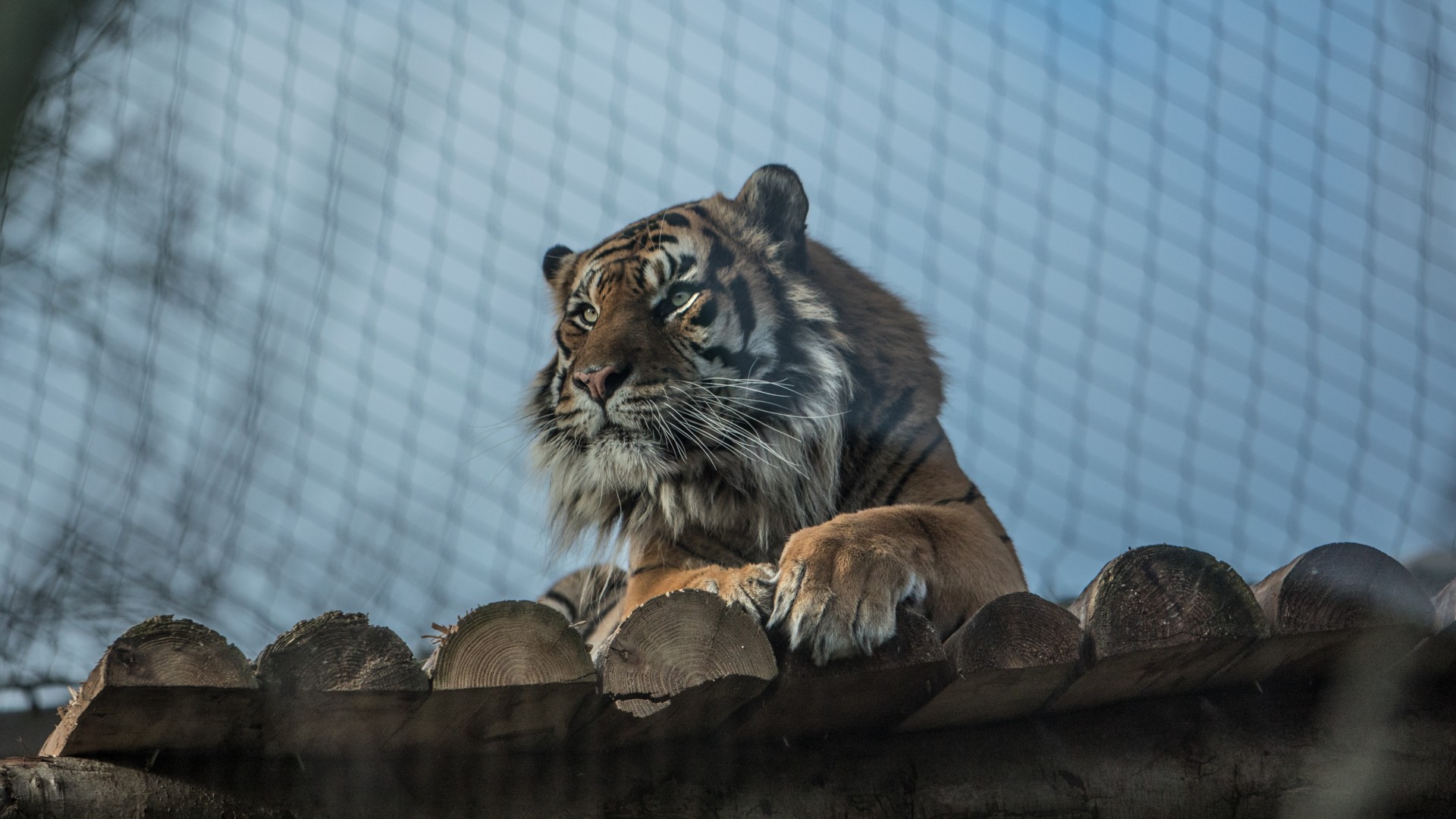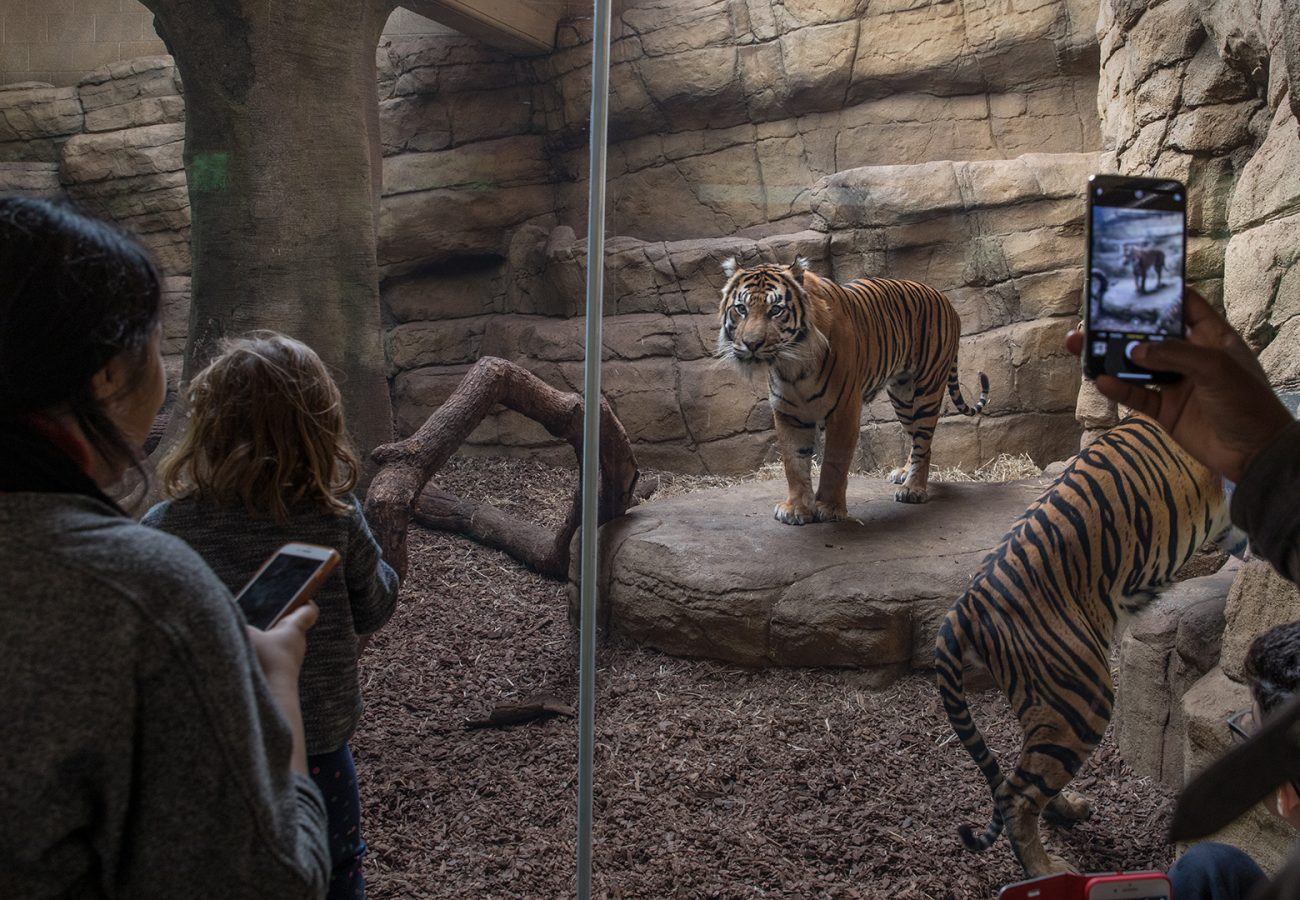Why captive tiger breeding does not aid conservation
Charismatic and awe-inspiring, tigers are revered the world over, yet their needs can never be met when kept in a zoo, nor does their confinement meaningfully benefit the conservation of tigers in the wild.

Captive tiger (c) www.georgelogan.co.uk
Tigers are the largest big cat in terms of weight, with the Amur tiger being the largest of all. Subpopulations inhabit temperate, tropical, and subtropical forests within south and southeast Asia as well as temperate forests in China and Russia – yet all around the world, tigers can be found languishing in zoos and other captive facilities, with no hope of a natural life in the wild.
Tigers are generally solitary, with the territories of males overlapping with those of several females. Six surviving subspecies are recognised by the International Union for Conservation of Nature (IUCN) Red List of Threatened Species (Amur, Bengal, Malayan, Northern Indochinese, South China and Sumatran) however this is currently under review. Tigers are part of the Panthera genus along with jaguars, leopards, lions and snow leopards, and are most closely related to the snow leopard.

(c) Aaron Gekoski
What are white tigers?
White tigers are not a ‘rare’ subspecies, but the result of a genetic mutation which can be traced back to a small number of individual tigers. Therefore, the breeding of white tigers is typically a consequence of inbreeding, which can result in the animals suffering physical deformities and being more susceptible to illness.
The hybridisation, or crossbreeding of big cats including tigers and lions to create ‘ligers’ or ‘tigons’ is equally unethical and has no conservation basis.
How many tigers live in captivity?
Across the world, there are believed to be more tigers in captivity than remaining in the wild. It has previously been stated in the United States there are approximately 10,000 captive tigers, in comparison it is estimated that there are 3,726-5,578, in the wild, with the IUCN estimating a more conservative 3,140.
Tigers are kept in circuses, tiger farms, zoos and as pets, and often exploited in shows, as photo props and for canned hunting. An increasing number are also housed in legitimate sanctuaries after being seized or rescued by local / national authorities.
It’s unknown how many tigers are kept in captivity worldwide, however in February 2024, it was estimated that there were at least 640 tigers in over 400 European zoos, including over 90 in 37 British zoos.
What is a tiger’s lifespan?
On average, a tiger’s lifespan in the wild is eight to ten years, with some individuals living close to 20 years. In captivity, where conditions mean individuals often avoid injury from prey and other tigers, and have access to plentiful food, water and veterinary provision, a tiger’s average lifespan is approximately 16 years, with some individuals living into their 20s.
However, captive tigers can be exposed to pathogens and suffer from diseases which they would not experience in the wild. Captive tigers have been reported to suffer from gastrointestinal syndromes resembling chronic inflammatory bowel disease, collectively referred to as ‘general adaptation syndrome’ or ‘tiger disease’, which is thought to be stress related.
A number of systemic bacterial diseases introduced through raw meat have also been identified in tigers living in zoos, which can result in fatalities especially in tiger cubs. Salmonellosis, caused by Salmonella typhimurium, which occurs either sporadically or as outbreaks, is a recognised medical problem in captive tigers. Zoo tigers and other big cats were also reported to have been infected with Covid-19 during the pandemic, presumably through close contact with their keepers, and while most cases were reportedly mild, some fatalities occurred.
Tiger family life and breeding
 In the wild, tigers are polygamous, with males mating with multiple females. On average, a female will give birth to two to three cubs, who reach independence at around 18 months.
In the wild, tigers are polygamous, with males mating with multiple females. On average, a female will give birth to two to three cubs, who reach independence at around 18 months.
However, in captivity, tigers are unable to choose their mates. This can have tragic consequences for the tigers involved, with many documented cases of tigers killing their potential mates during zoo breeding introductions, even when initial interactions appeared positive.
Big cats, including tigers, may be hand-reared by zoos, for reasons that are not always in the best interest of the animal; especially where zoos utilise the cubs as photo-props for visitors.
A recent study reviewing the hand-rearing of big cats in zoos concluded that it appears to have several negative effects on those animals when they mature, including reduced number of offspring and litter size, and high infant mortality. The study also found that hand-rearing big cats could be detrimental to the integrity of breeding programmes.
Further, behavioural issues later in life due to a lack of appropriate socialisation during critical learning years can negatively impact survival and breeding in the wild, thus rendering captive tigers unfit for reintroduction. As such, the hand-rearing of tiger cubs serves no meaningful conservation purpose.
Even when not hand-reared by humans, the negative effects of spending time in captivity, including the loss of natural behaviours required for survival in the wild, and the unnatural exposure to humans often counteract efforts to maximize any potential survival in the wild if reintroductions were to be attempted.
Why does Born Free oppose captive breeding of tigers?
Inbreeding, hybridisation, and genetic bottlenecks have been confirmed by science and recognised by the zoo industry for decades, yet zoos continue to breed animals for display knowing that they serve little or no purpose as an ‘insurance population.’
Like other animals in zoos, big cats are rarely released into the wild as part of genuine conservation reintroductions; they are simply forced to breed, generation after generation, for paying visitors to observe in captivity in order to generate profits. The breeding of tigers in captivity is not a recognised conservation action by the IUCN and it must stop.
There is no clear conservation benefit to holding these majestic animals captive. Therefore, we are calling on the UK government and the zoo community to bring an end to big cat suffering and take steps to phase them out of zoo collections. We also call on the public to stop supporting the zoo industry by avoiding these venues to decrease the demand that fuels the desire to hold these awe-inspiring animals captive.

Will you help us end the keeping of big cats in zoos?
Majestic tigers and their big cat cousins deserve better than a life caged in captivity. Please sign our petition for a Roar-Free UK, to tell the UK Government the keeping of big cats in zoos must end.
